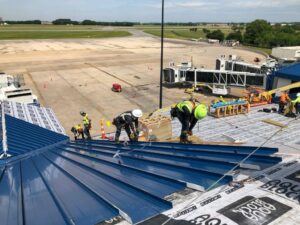Nashville Developers Rise to Challenge of Workforce Housing
As the vibrant city of Nashville continues to grow, the conversation surrounding housing has shifted significantly. It’s not just about mansions and luxury apartments anymore. There’s a newfound focus on something many locals can relate to: workforce housing. You know, the types of homes that cater to our everyday heroes and hard workers — firefighters, teachers, baristas, and artists. With construction costs skyrocketing and a frantic demand for affordable living space, developers are working tirelessly to balance their profit margins while meeting the needs of the community.
What is Workforce Housing?
Ask seven developers what they think “workforce housing” means, and you might get seven different answers. But a key measuring stick is the area median income (AMI), which the U.S. Department of Housing and Urban Development (HUD) updates yearly for each city. This year, in Davidson County, the AMI for a family of four stands at $106,000. That means families earning 80 percent of this threshold, or $85,500 or less, can qualify for affordable housing units. For individuals, that threshold drops to $59,850.
To give some context, many individuals living in public housing typically earn 30 percent of the AMI or less. Holladay Ventures, along with several other firms, makes use of HUD’s Low-Income Housing Tax Credit program, which covers about 40 percent of construction costs. The only catch? Future tenants must average at 60 percent of AMI, with a ceiling at 80 percent. While this program was designed to boost affordable unit construction, it has its limitations.
The 80-120 AMI Gap
As Evan Holladay, president and CEO of Holladay Ventures, puts it: “Without the credit, we wouldn’t be able to do what we’re doing, so we have to fit what the program requires.” However, Holladay argues that there’s a significant gap in available financial support for those earning between 80 and 120 percent of AMI — the very definition of workforce housing. While some cities have tax credits for middle-income housing, Nashville’s Barnes Affordable Housing Trust Fund primarily targets individuals earning 60 percent of AMI or less.
Innovative Solutions in Housing Design
Bringing some creative solutions to the table is Nashville’s own Hastings architecture firm. Their projects, like Rutledge Flats in SoBro and Martin Flats in Wedgewood-Houston, offer furnished studio units that range from $1,100 to $1,300 per month, including utilities. A major aspect of their concept is a co-housing model where residents share kitchens and laundry facilities, leading to potentially lower rental costs. This arrangement allows the firm to utilize smaller sites that might otherwise be overlooked.
“What we love about these projects the most is they’re providing for a need,” shares David Powell, principal at Hastings. “In particular, here in Nashville, it’s this workforce need that we are desperate for right now.”
Transforming Old Spaces into Homes
Nashville is witnessing a trend where old, run-down hotels are being transformed into homes. Brick and Mortar Investments recently revitalized a property into Trinity Lofts on Brick Church Pike. Their strategy includes accepting housing choice vouchers to make rent more manageable, with studios priced around $949. Partner Justin Novakovich mentions that while renovation takes time, the central location of these properties ensures future value.
“All the new developments around Nashville are luxury housing,” he points out. “It’s so expensive to build that if you can’t charge $2,000 for a one-bedroom unit, you’re not going to make money.” They manage to strike a balance in providing housing for the middle class.
Mission-Driven Developments
Some developers are on a mission to make a difference, like the Metro Development Housing Authority (MDHA) and Urban Housing Solutions. MDHA’s Cayce Transformation project aims to provide homes for the workforce demographic, offering units priced between $1,050 and $1,365 for a one-bedroom. One of the advantages of their projects is that if tenants’ incomes rise beyond 120 percent of AMI, they still retain their homes — ensuring stability.
Urban Housing Solutions also recognizes the growing need for affordable housing, as expressed by Olivia Jiménez, community development specialist for the organization. “Now, affordability is so far out of reach for many that it has really grown,” she notes.
Conclusion
As Nashville continues its growth spurt, the urgency for affordable housing — especially for middle-income folks — has never been greater. Developers are recognizing this increasing demand, finding themselves compelled to provide homes that cater to a wide spectrum of residents. Whether out of genuine concern for community welfare or the simple economic necessity, it appears that if you build housing for those in the middle, they will fill it, creating a more balanced Nashville for all.








